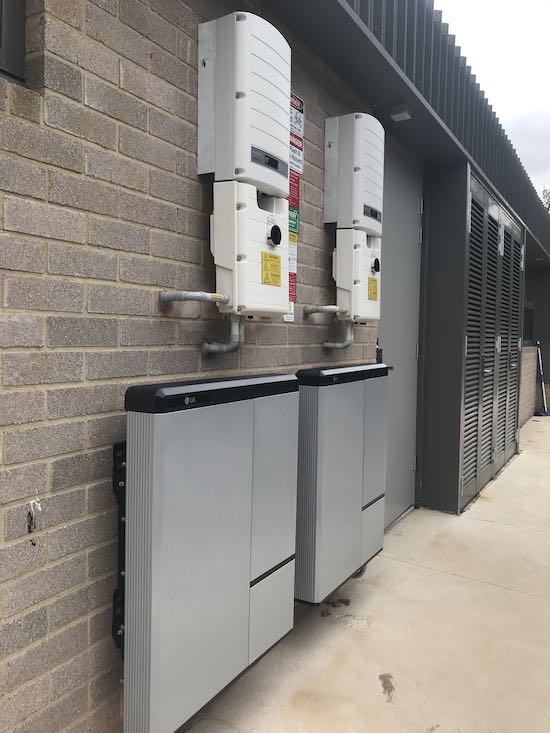

Leading ACT medical organisation the John James Foundation has committed to running all of its healthcare operations on “sustainable energy,” starting with the installation of 11.8kW of solar and a battery storage system at one of its facilities in Canberra.
The installation at the John James Village – which provides accommodation for people living with blood cancer and their families – was backed by the ACT government’s Next Generation Energy Storage Program, and co-funded by the NGO, ActewAGL, Solar Hub and Reposit Power.
The energy storage system is made up of two LG Chem lithium-ion batteries.
“As interest in battery storage rises in Australia, the John James Village which is operated by the Leukaemia Foundation has embraced the idea of gaining energy independence by offsetting most, if not all, of their operational energy costs,” said ACT climate minister Shane Rattenbury on Wednesday.
“We’ve seen here the installation of some batteries and a solar system which is going to essentially eliminate their electricity bills.
“These savings will be redirected into providing continuous delivery of respite accommodation and support services to people undergoing treatment for life-threatening blood cancers”.
Rattenbury said the solar and battery system was not only sustainable in terms of managing energy costs, but also from an environment and grid point of view.
“Obviously having solar panels helps cut emissions, and having the batteries here supports our electricity mix. So it’s a win all-round.”
The ACT government’s Next Generation Energy Storage program has provided $25 million to subsidise battery storage in more than 5000 homes and businesses in the Capital Territory by 2020.
The scheme offers discounts of up to $4000 for an average household system. And so far, it has supported the installation of more than 1000 battery storage systems across the Canberra region.
“It is great to see so many households and businesses embrace new technology under one of the biggest roll-outs of small scale battery storage in the world,” Rattenbury said.
“By working collaboratively with industry and community organisations, we can highlight the benefits of combining renewable energy generation with storage technology in many ways, such as powering the ACT in the right direction to achieve its 100 per cent renewable electricity by 2020 target.”
Sophie is editor of One Step Off The Grid and deputy editor of its sister site, Renew Economy. Sophie has been writing about clean energy for more than a decade.
This post was published on November 21, 2018 10:33 pm
Iconic Australian hardware and garden store says it has reached 100 per cent renewables, with…
Data used to showcase the downward impact of renewable energy on power prices contained a…
Most so-called ‘community batteries’ are actually installed by electricity networks, but this local group managed…
Rising energy bills are driving a surge in complaints. The NSW Energy Ombudsman wants better…
Australians are often being misled when they try to make sustainable electrical appliance choices, and…
China EV giant bows to trend of offering "complete solutions" for home energy, with launch…
View Comments
I so hope some kind soul donated this!